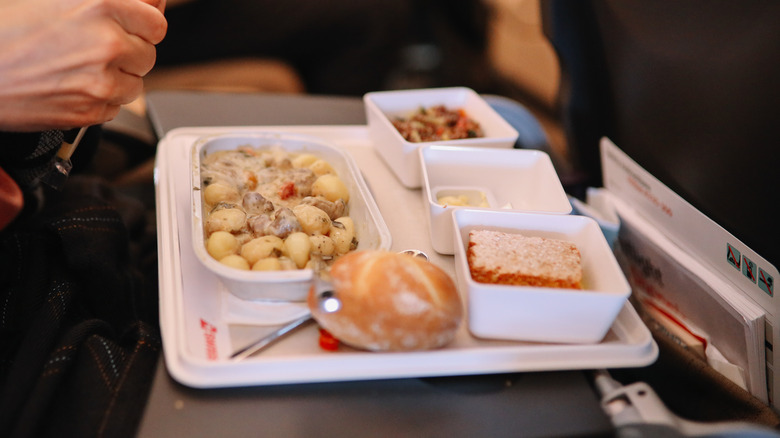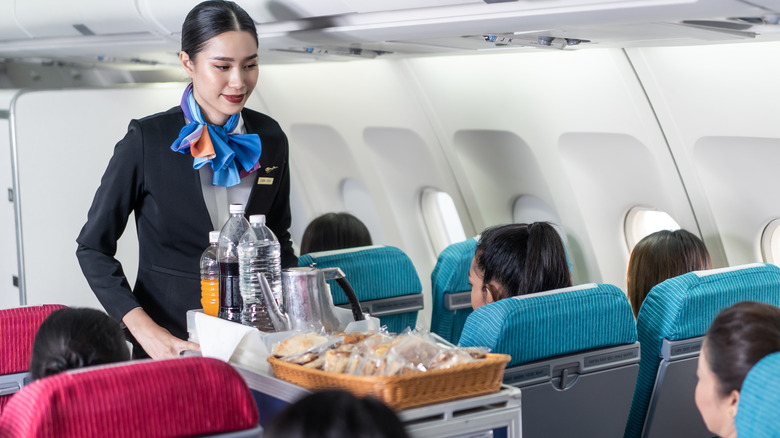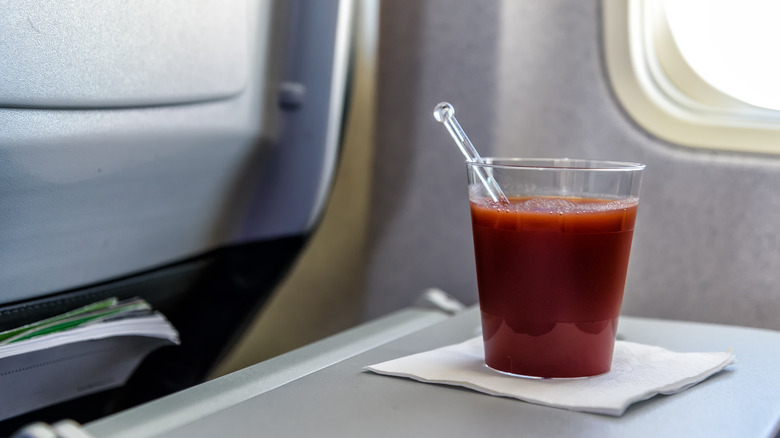Why You Taste Food Differently While Flying
Few people jump out of bed on a flight day, exclaiming, "I just can't wait to dig into some good-ole airplane food!" Some well-known chefs even vow to never eat aboard an airplane barreling to far-flung destinations, including Anthony Bourdain, who was known for declaring he'd eat anything — except airplane food.
You can always bring your own meal when flying, but it somehow doesn't taste the same. There are multiple reasons for that, which at least partially explain your flight carrier's seeming inability to provide a palatable meal at 30,000-plus feet above ground level. Science has a hand in the taste discrepancy, which revolves around pressurized cabins, blood oxygen levels, decreased moisture, background noise, and the movement of air inside the flight cabin.
Two of the five human senses — taste and smell — play a hand in the saga of diminished food enjoyment while flying under these conditions. Understanding how it all works may help you plan accordingly — or at least be content arriving hungry and ready to explore the local cuisine at your destination.
What flying does to blood oxygen levels and sense of taste
In order to adequately breathe at high elevations, a flight cabin must be pressurized to help regulate the amount of available oxygen for each passenger. Otherwise, we'd all be susceptible to hypoxia and, eventually, much worse. But when it comes to eating, which is often necessary on international or long-distance domestic flights, that same cabin pressurization lowers your blood oxygen levels — which in turn wreaks havoc on your sense of smell.
Taste and smell work together in the eating experience, with taste buds and nose nerves sending joint signals to the brain for recognizing and relishing flavors while you eat. When that delicate sensory dance is out of step due to a pressurized cabin, even foods you ordinarily love can be lackluster or bland. You may also lose your normal perception of whether a food is adequately salty or sweet.
Humidity levels, taste sensitivity, and background noise
Again, it's all about the nose when it comes to that super-dry air inside an airplane. According to BBC, moisture levels can go as low as 12% in the 30,000-plus-feet elevations of a typical flight pattern, leading to dried-out nasal passages and, consequently, diminished ability to taste your food. It doesn't help that the arid air gets circulated continuously, leaving little room for taste adjustment or recovery during your journey.
Another way dry air can affect flavor is by reducing your ability to create saliva, which typically breaks down flavors in food as you chew, releasing them into the taste buds. The circulating air can also cool down hot foods, leaving them less appetizing.
Then there's the unavoidable noise inside an airplane cabin — some nearby and disruptive, some from engine noise, but more commonly, it's the persistent background noise of about 80 to 85 decibels that alters taste perception (per the CDC). Your senses, from hearing to smelling and tasting, are spread thin and fail to congregate sufficiently for the ultimate in-flight dining experience. The exception to this may be the umami taste, which seems to be immune to taste suppression effects, leading to umami-rich tomato juice drinks and airline menus containing shellfish, soy sauce, spinach, and cheesy pasta dishes.



